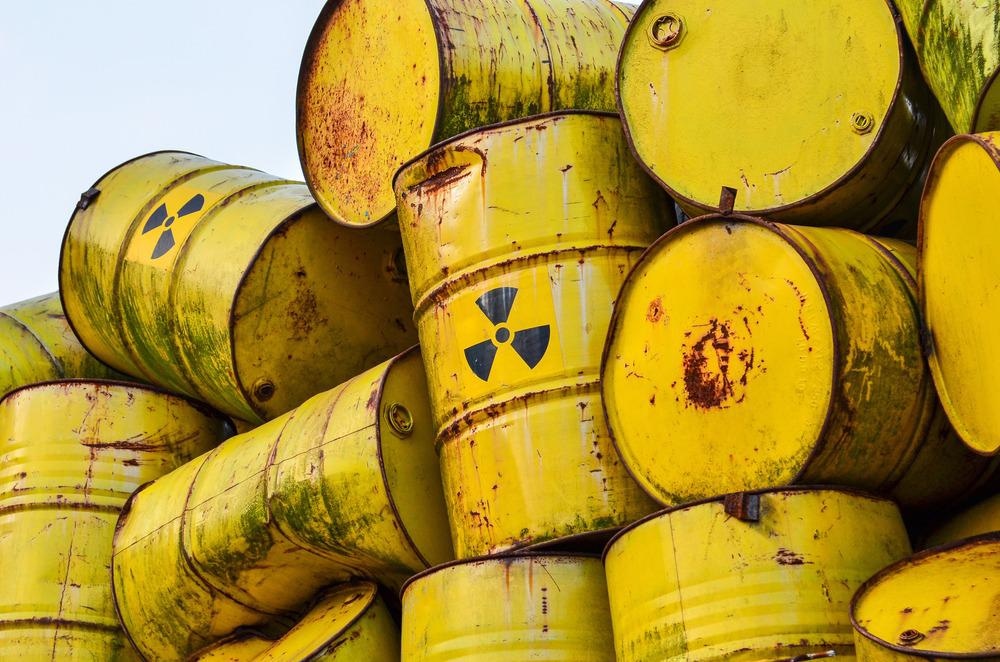Nuclear energy has become a vital component in the world’s energy systems over the last 60 years, supplying about 5% of all energy consumed worldwide and 13.5% of the world’s electricity. Nuclear power provides 8% of the energy consumed in the USA, and 20% of the nation’s electricity, but nuclear power stations are incredibly complex systems with catastrophic failure outcomes. Robotics and industrial automation enable nuclear power plants to operate – and decommission – safely.

Image Credit: Zoltan Acs/Shutterstock.com
Automated systems carry out tasks like operation status assessments, real-time critical situational decision-making, and remote operations. They are employed for various reasons: performing tasks remotely in areas that are too dangerous, such as being too hot, far above the ground, or radioactive, for humans to work in; automating shutdown procedures; automating fail-safe mechanisms; and supervising all of the plant’s operations to ensure they are efficient and safe.
Robots in nuclear environments operate on various motion systems depending on the task at hand. Fully autonomous robots that can walk, drive, swim, or fly around the environment are especially important in dealing with nuclear waste or fallout from nuclear disasters.
Rail- and gantry-mounted components, stationary arms, and other automated mechanical components all enable nuclear plants to make use of industrial automation for efficiency and safety.
Similarly, robots employ a wide range of sensors, processors, and actuators depending on the application. Advanced computing is also required for machine vision functions, artificial intelligence and decision-making, and sensing applications.
Using Robots for Nuclear Waste Clean-Up
One environment where robots are uniquely suited for work is in nuclear waste clean-up operations. This is because of high levels of radiation that make these tasks too dangerous for humans to get anywhere near.
However, a lot of nuclear waste remains in temporary storage because robot technology has not advanced to the point where it is capable of dealing with the waste yet.
In the UK, 4.9 million tons of nuclear waste from the country’s nuclear power stations are still in temporary storage facilities – representing the most significant and most complicated environmental remediation task throughout all of Europe.
In response to this large and growing problem, the UK government and academic community are working to develop the robot solutions required to deal with nuclear waste. This project is underway under the umbrella of the National Centre for Nuclear Robotics, a consortium of eight universities and research centers: the University of Birmingham Extreme Robotics Lab, University of the West of England, University of Lincoln, University of Essex, Lancaster University, Queen Mary University London, University of Bristol, and the University of Edinburgh.
The work is being carried out in multiple departments in a coordinated way to innovate quickly and effectively. At Essex University, researchers are focused on developing new machine vision algorithms to help robots carry out localization, mapping, and perception tasks in nuclear environments.
Professor Klaus McDonald-Maier leads the Essex team carrying out this work. He said:
“So far, we have experimentally investigated how sensors and associated chips and software deteriorate with radiation exposure and have developed new ways of modeling this degradation to predict sensor performance at different radiation dose rates, which is extremely important for building future systems.”
The work of the National Centre for Nuclear Robotics is not only focused on dealing with the UK’s nuclear waste problem but also on developing robot systems for other tasks in nuclear energy.
Robots will become increasingly crucial for in-service maintenance and inspection of existing nuclear power stations as the technology that drives them progresses, enabling them to perform more and more complex tasks.
New nuclear reactor designs feature robot assistance heavily to increase automation capabilities. As well as making complex operations run safely and efficiently in hazardous nuclear environments, this increasing level of automation will also make nuclear reactors cheaper to build, operate, and decommission. This will positively impact reducing the localized cost of electricity (LCoE) and slightly mitigate the effects of rising energy bills.
Professor McDonald-Maier says that this research will have applications in robotics for various applications beyond nuclear environments as well:
“Although our focus has been on the nuclear domain, our research has developed fundamental robotics, embedded systems and AI capabilities that are applicable across other extreme areas such as offshore environments, in space and mining. With additional applications possible, such as bomb disposal, firefighting and rescue robotics, this research will remain relevant for decades to come.”
Automation for Safer Nuclear Power
While nuclear power contributes significant amounts of carbon-free energy to the world economy, for many, its downsides outweigh these positives. Chief among these is the problem of nuclear waste; there is still no safe way of disposing of it. Another problem with nuclear power is safety: when nuclear reactors go wrong, the effects are catastrophic. Robots and automated systems could solve these problems to help us produce nuclear energy safely.
Continue reading: Detecting Radiation-Induced Defects with a New Machine Learning Platform
References and Further Reading
Liptak, B. (2012). Why Nuclear Needs Process Automation. Control. [Online] Available at: https://www.controlglobal.com/articles/2012/liptak-nuclear-needs-process-automation/.
Making robots survive longer in radioactive environments. (2021) University of Essex. [Online] Available at: https://www.essex.ac.uk/news/2021/05/18/making-robots-survive-longer-in-radioactive-areas.
Schmitt, L. (2012). Automations influence on nuclear power plants: a look at three accidents and how automation played a role. Work. Available at: https://doi.org/10.3233/wor-2012-0035-4545.
Disclaimer: The views expressed here are those of the author expressed in their private capacity and do not necessarily represent the views of AZoM.com Limited T/A AZoNetwork the owner and operator of this website. This disclaimer forms part of the Terms and conditions of use of this website.